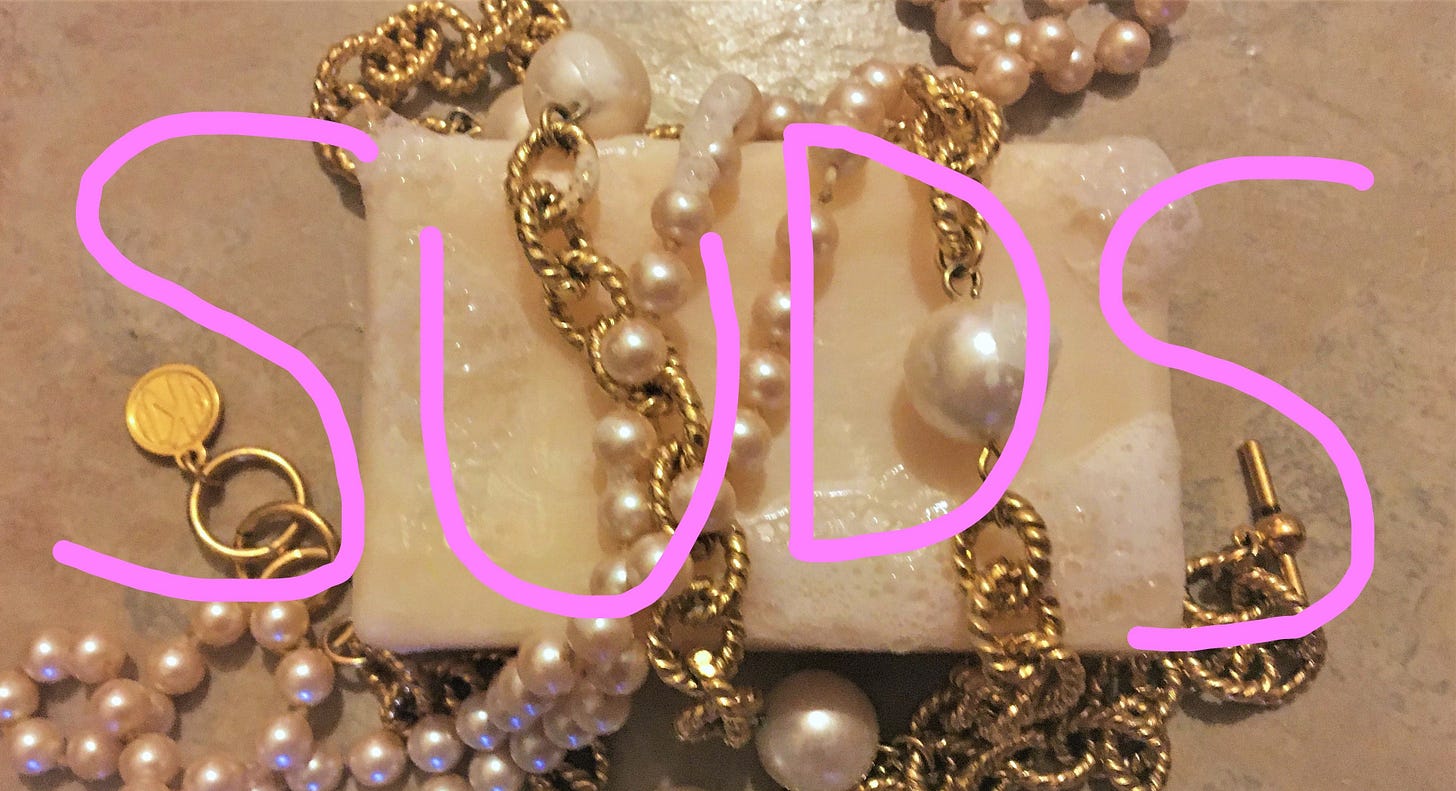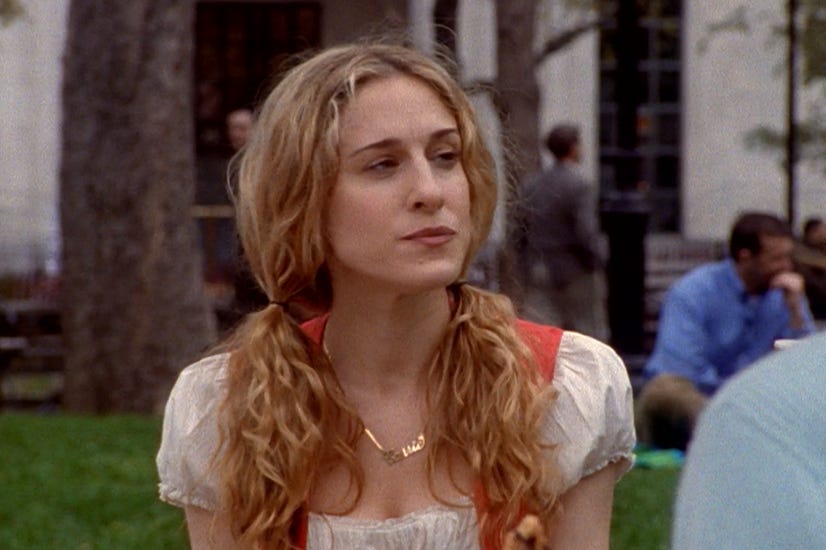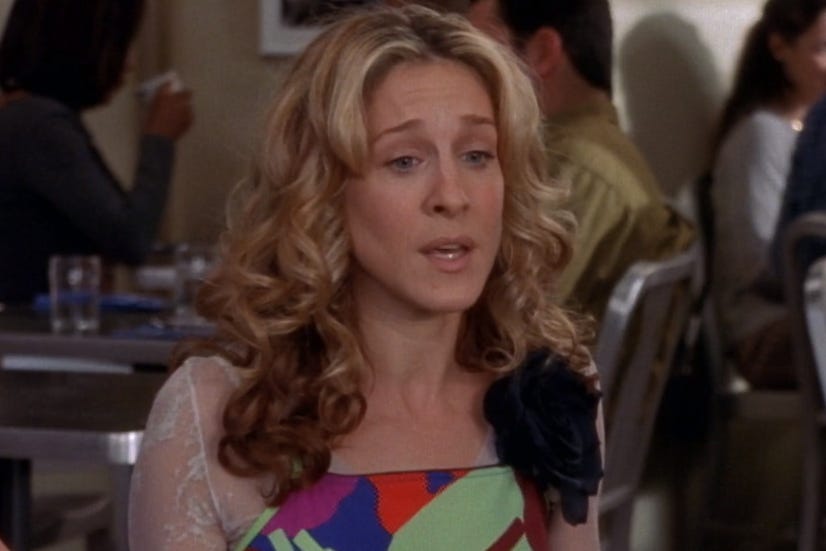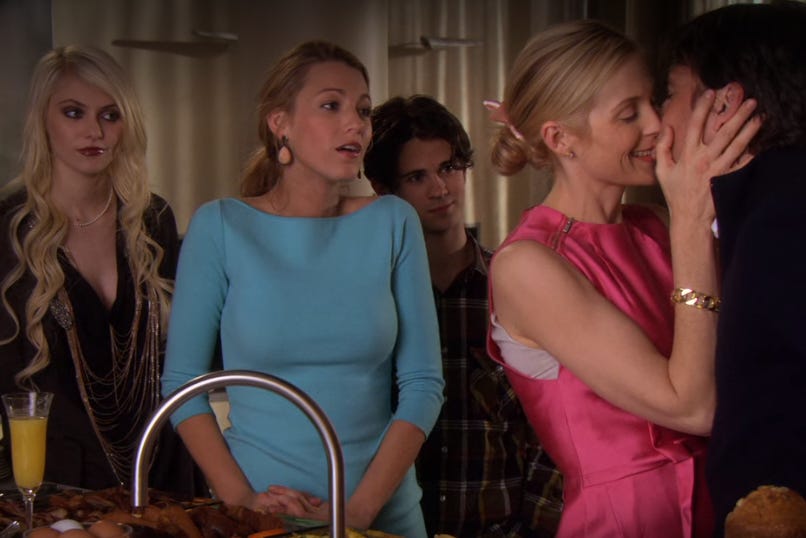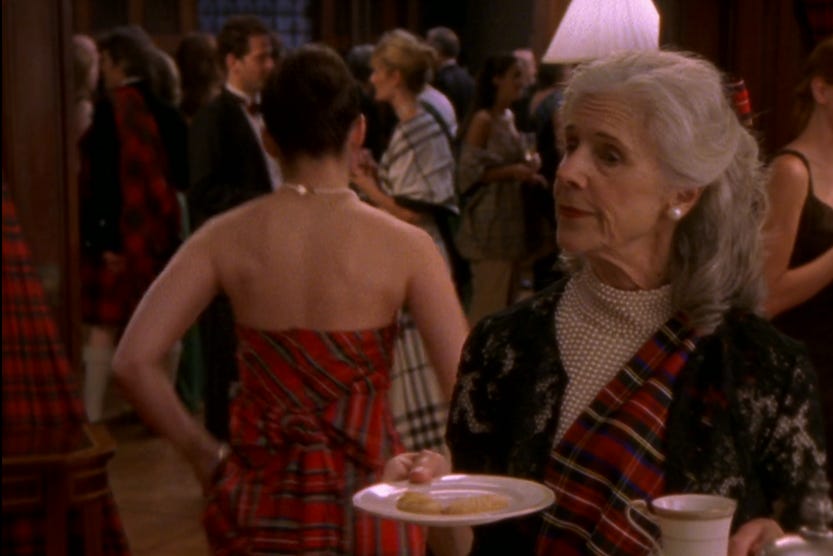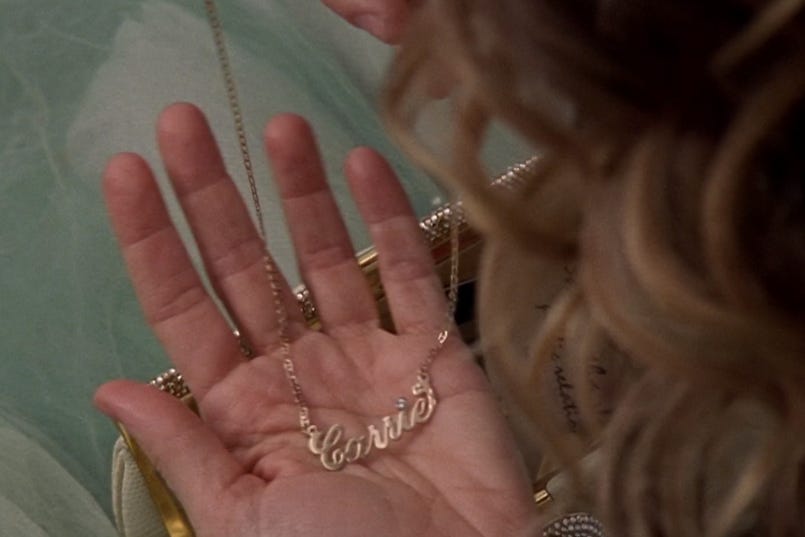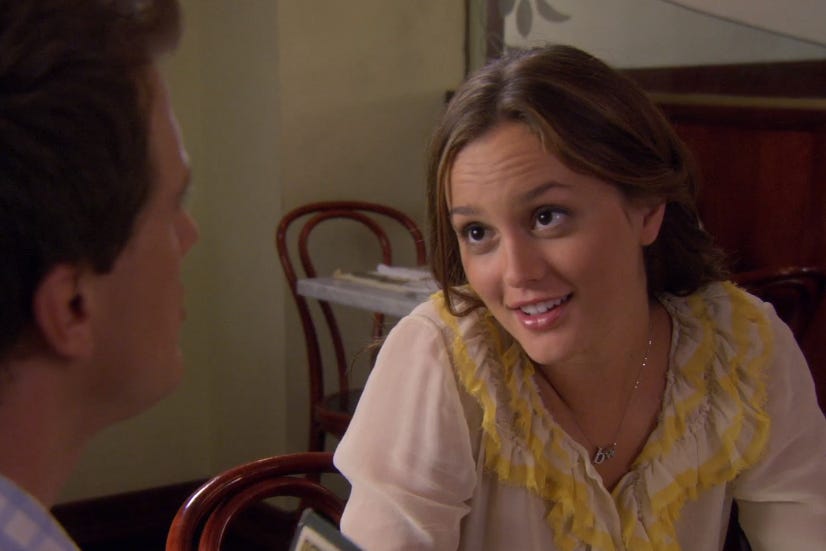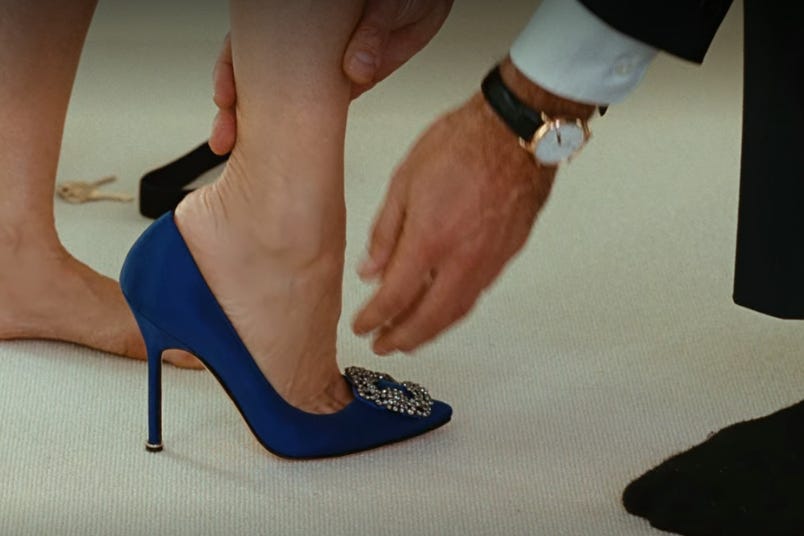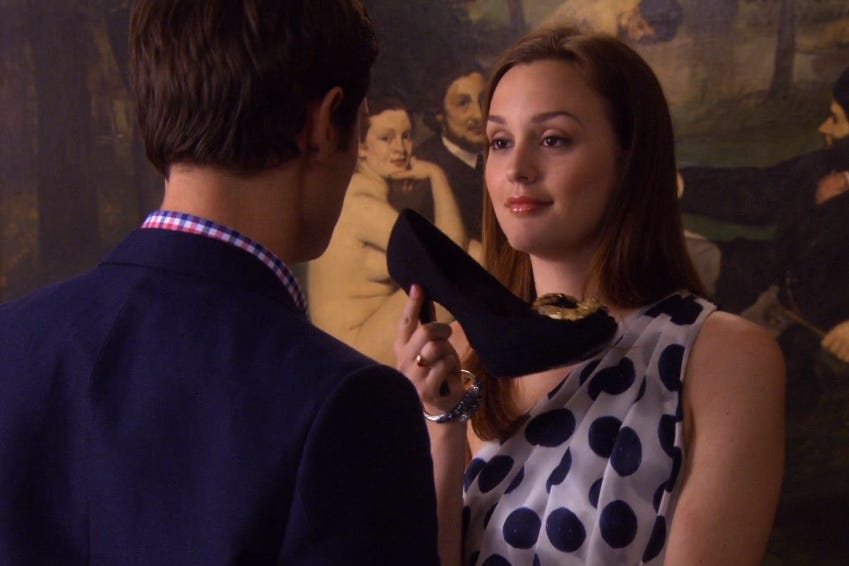I Couldn't Help but Wonder . . .
A Collection of Thoughts on Sex and the City and Gossip Girl Fashion
A few weeks ago, HBO Max confirmed the Sex and the City revival, and the internet let out a collective groan. Unlike the streaming service’s Gossip Girl reboot, which will focus on a new cast of characters, the SATC revival will continue to follow the lives of Carrie Bradshaw, Charlotte York, and Miranda Hobbes, despite having left all of them desiccated corpses by the end of the second movie. Samantha Jones, the most sex positive of the four friends (including, you know, a sex columnist), won’t appear.
Aside from their recent resuscitations, these two original series share some similarities: Both were set in Manhattan (and, begrudgingly, Brooklyn), inspiring many starry-eyed viewers to move to the city or at least take a location-centric bus tour of it. (Magnolia Bakery! The Palace!) Both were largely populated by white, well-off straight people, and for very sex-heavy shows, were disturbingly sex negative and biphobic. And both, most importantly, were costumed by Eric Daman.
Daman joined Sex and the City in season two, as an assistant to its head costume designer, Patricia Field. He had previously worked as a model and stylist, and Field wanted someone with that “editorial background” (L’Officiel). He remained with the show through season four and its Emmy win for Outstanding Costumes in a Series.
Daman’s collaboration with Field and Sarah Jessica Parker (Carrie) was a formative experience: “Pat and SJP both had such an amazing understanding [of] how color, print, and silhouette worked on the screen, being around them and being a part of their creative process was magical—and mythical” (Hello!). Daman cites his favorite Field costume as Carrie’s dirndl, worn for a casual picnic in the park with her friends.
“It was an iconic moment of vintage fashion,” says Daman . . . about the “pushback” from producers and network brass. “‘Why is she wearing a dirndl?’” It doesn’t really matter because it’s just this great Heidi picnic, Carrie-fashion-moment. It was an ‘ah ha!’ moment for myself and the world: You can just be whomever you want to be and it doesn’t always have to be a Lacroix dress” (Fashionista).
Of course, Sex and the City’s costume design wouldn’t quite work for the world of Gossip Girl. Daman outfitted wealthy Upper East Side teenagers, not vintage-loving thirtysomething women. Blair Waldorf would never wear a dirndl to the park or, god forbid, sit on the grass. And that is largely the point: Both shows based their costume design in an understanding of character, environment: “We were telling the stories and showcasing the [SATC] characters through the way they dress,” says Field. “It’s a storytelling situation” (Fashionista). Daman’s and Field’s costumes work so well not only because they look good on-screen but also because they are true to the characters and their evolving lives. Like SATC, Gossip Girl dealt in archetypes—the type A, the free spirit, the rogue—and then made them fully fleshed through story lines and costumes. Daman even went on to costume design a marriage of the two: The Carrie Diaries, a look at the teenage years of Carrie Bradshaw.
That being said, in rewatching and researching Gossip Girl, I did note a handful of smaller parallels between the two shows, which then collected at the bottom of my brain like loose change. I’ve fished them out for you, listed below.
The Vogue Darling
From both shows emerged a real-life fashion star: from SATC, Sarah Jessica Parker, and from Gossip Girl, Blake Lively. I’m sure some will rankle at this comparison (the New York Post, after all, published a pearl-clutching take on Lively’s 2009 Vogue cover), but taste aside, I think the similarities hold up: Both women were, and are, favorites of Anna Wintour and runway front rows. Both know how to use street style and red carpet looks to shape their image. (Think Lively’s employment of suits in her 2018 promotion of A Simple Favor.) And both, for better or for worse, had an outsized role in their character’s costume design.
Field and Daman have spoken, respectively, of Parker’s and Lively’s influence on their costumes. Parker, at thirty-three, had much more experience in the fashion and entertainment worlds, and so more initial input into the choice of costume designer and the shaping of her character’s style. (Carrie’s flower brooches, for instance, were Parker’s idea.) Lively, at twenty, was newer to costume design but gained more confidence as the seasons went on. Says Daman:
Blake wanted to play with the clothes and be a part of it, and I think Blake and Serena had a symbiotic relationship, in a way, stylistically. . . . [Blake] got more and more involved in that way as Serena grew and as Blake grew. When she first came in, I think she was open to deferring to me because she was just learning. She was wide-eyed; she loved it all so much and wanted to be around the fashion and wanted to learn about it all (Fashionista).
The Bow
In my profile of Lily, I talked about her hair bows, which appear about four times in the later seasons but all at moments that connect back to her mother, CeCe Rhodes. I’ll admit now that when I saw those bows, another society matron came to mind: Bunny MacDougal.
On SATC, Bunny is the mother of Trey MacDougal, Charlotte’s first husband. Like CeCe, Bunny has a preternatural control over her children and a deep love for pearls. She is never without a hair bow, its fabric always perfectly coordinated to her ensemble—even in the family tartan for a Highland Fling. Like Bunny and CeCe (and eventually Lily), this accessory is prim, pulled together, and wickedly feminine—a sweetness that betrays the bite underneath.
The Nameplate
From season one onward, Carrie often wears a gold nameplate necklace; she even misplaces it in the series finale, a symbol of her loss of her New York self in Paris. While Carrie’s necklace may have been many white viewers’ introduction to this style of nameplate necklace, women and girls of color were wearing this style for years before Field plucked the idea from the “kids in the neighborhood” ( “Uncovering the Cultural History of the Nameplate Necklace,” an article I highly recommend on Vice).
I’d like to say that the show writers handle Carrie’s appropriation with cultural sensitivity and thoughtful discussion, but this is Sex and the City we’re talking about. Have you seen the second movie??
In episode 4.12, Carrie complains about her engagement ring, which Miranda helped choose:
Carrie: It was a pear-shaped diamond with a gold band. . . . It’s just not me.
Miranda: You wear gold jewelry.
Carrie: Yeah, like ghetto gold for fun, but this is my engagement ring.
By “ghetto gold,” I can only assume Carries means a piece like her nameplate necklace—jewelry that, on a Black or brown body, is seen as “tacky” or “cheap,” but on a white body is “cute” or “eccentric.”
On Gossip Girl, Blair also wears name necklaces, though hers look like they were customized at Tiffany, rather than bought from a street vendor. In a few episodes, Blair wears a rose-gold oval inscribed with Waldorf. In another, she wears her initials. For Blair, her surname, the one-two punch of B and W, are what she wants to show to the world. She leads first with her last name, the privilege and status it entails.
Both Carrie and Blair understand fashion as an expression of self, and so they choose to wear pieces of themselves around their necks. But while Blair’s necklaces reflect her blue blood, Carrie’s are a reflection of how “fun” she is: How cool to wear a gold nameplate! How different! In reality, though, Carrie is just as elitist as Blair Waldorf; gold is too vulgar for her engagement ring.
The Buckle
Unsurprisingly, Carrie and Blair share other fashion favorites. At the end of the SATC movie, which premiered in 2008, Big proposes to Carrie using one of her Manolo Blahniks: bright blue pumps with crystal buckles. The style, Hangisi, became instantly iconic—knocked off by lower-priced designers and still available for a heftier $995 on Blahnik’s website.
Fast-forward to 2010, and Blair meets Louis, a prince of Monaco, in Paris. When they part, she gifts him one of her shoes, telling him he can “always come find [her].” Like Big’s proposal, Blair’s gift is a Cinderella-style romantic gesture, and I can’t help but think that Daman intended to link the two moments. After all, Blair’s heels are Roger Viviers’s Maréchale style: navy-blue platform pumps with gold buckles, echoes of Blahnik’s Hangisi. In the label-driven worlds of Carrie and Blair, a designer shoe (“worth a hell of a lot more than a glass slipper,” says Blair) may be the biggest expression of love of them all.
[Join me next Thursday, 2/4, for the last mini issue before I return to character profiles.]



